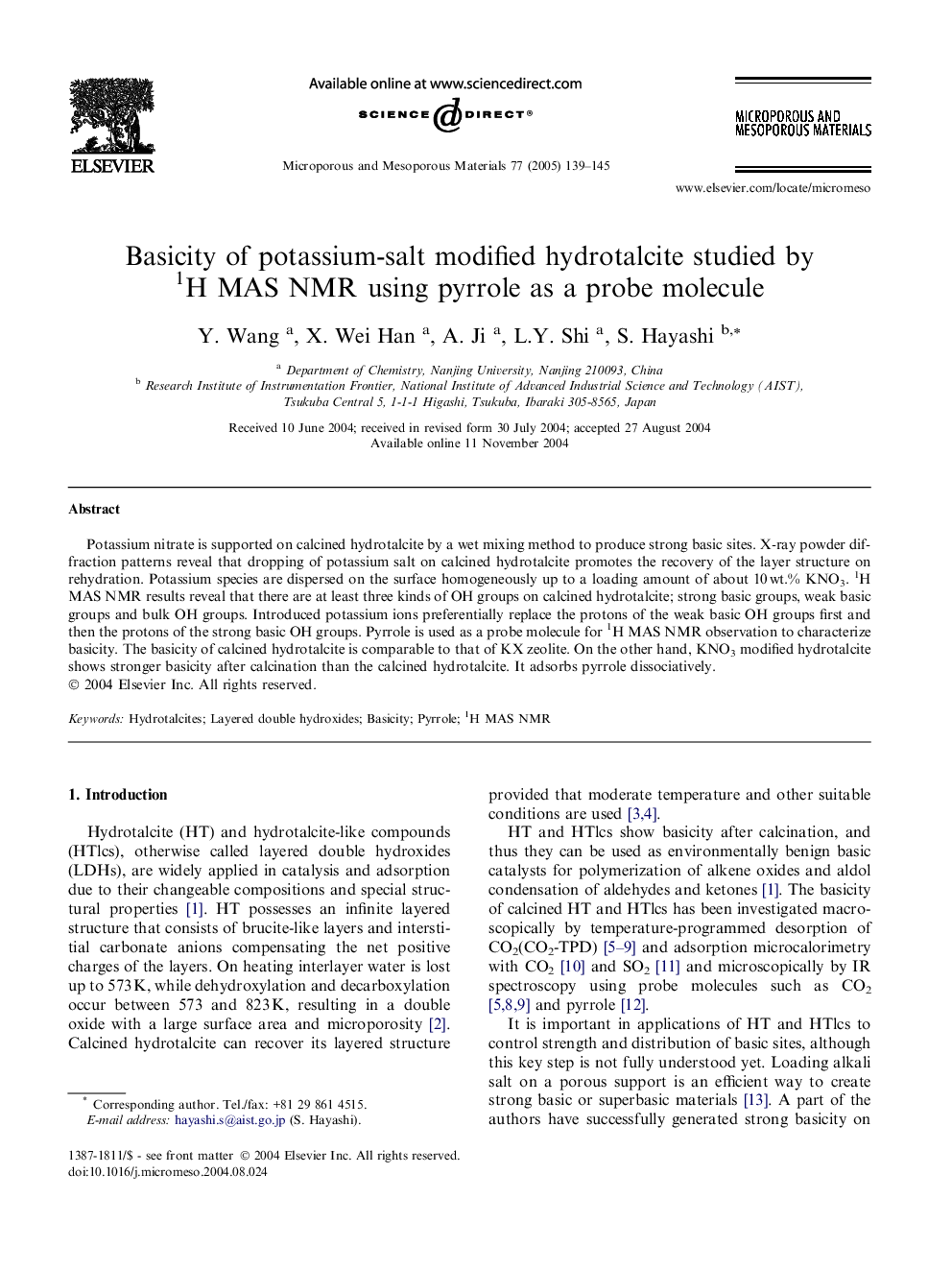| Article ID | Journal | Published Year | Pages | File Type |
|---|---|---|---|---|
| 9617853 | Microporous and Mesoporous Materials | 2005 | 7 Pages |
Abstract
Potassium nitrate is supported on calcined hydrotalcite by a wet mixing method to produce strong basic sites. X-ray powder diffraction patterns reveal that dropping of potassium salt on calcined hydrotalcite promotes the recovery of the layer structure on rehydration. Potassium species are dispersed on the surface homogeneously up to a loading amount of about 10Â wt.% KNO3. 1H MAS NMR results reveal that there are at least three kinds of OH groups on calcined hydrotalcite; strong basic groups, weak basic groups and bulk OH groups. Introduced potassium ions preferentially replace the protons of the weak basic OH groups first and then the protons of the strong basic OH groups. Pyrrole is used as a probe molecule for 1H MAS NMR observation to characterize basicity. The basicity of calcined hydrotalcite is comparable to that of KX zeolite. On the other hand, KNO3 modified hydrotalcite shows stronger basicity after calcination than the calcined hydrotalcite. It adsorbs pyrrole dissociatively.
Related Topics
Physical Sciences and Engineering
Chemical Engineering
Catalysis
Authors
Y. Wang, X. Wei Han, A. Ji, L.Y. Shi, S. Hayashi,
